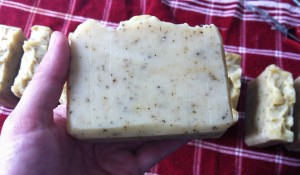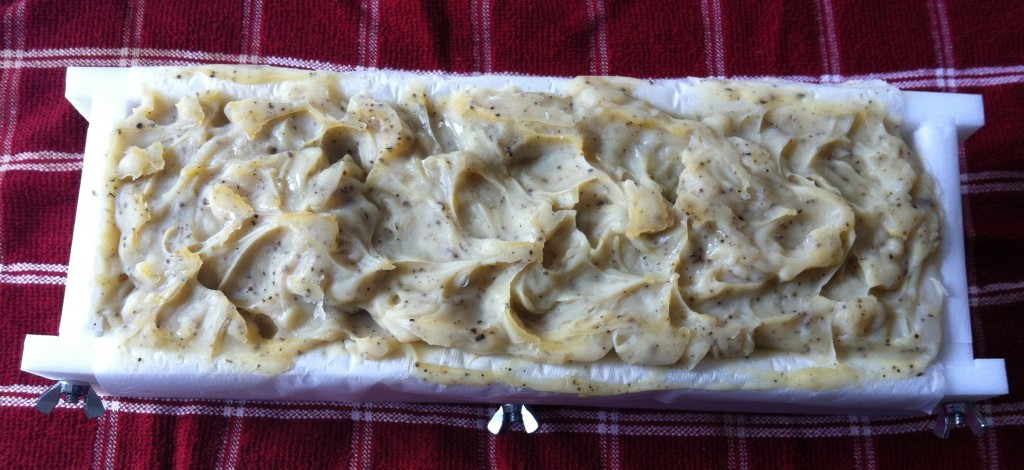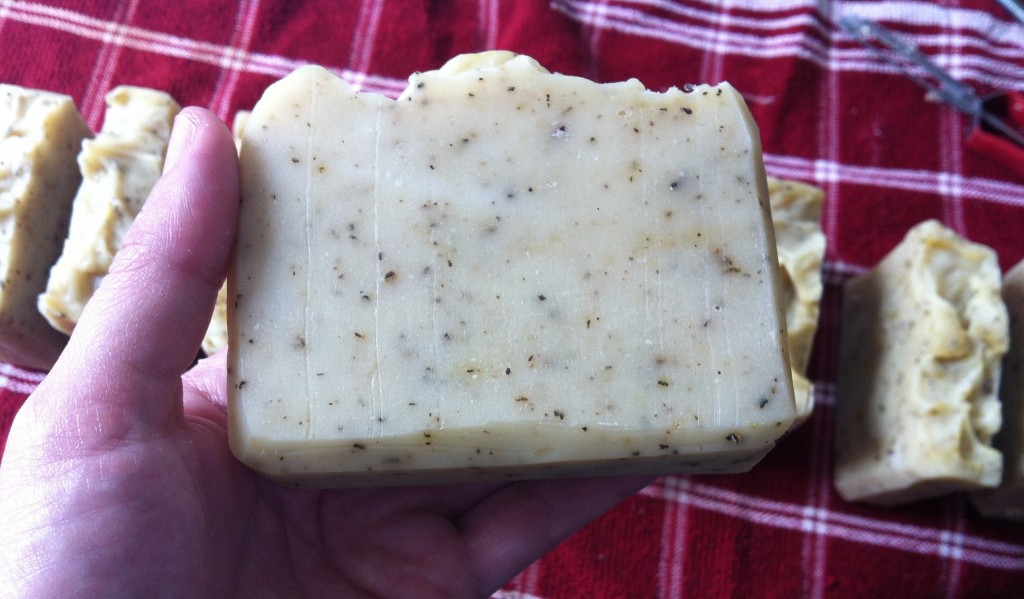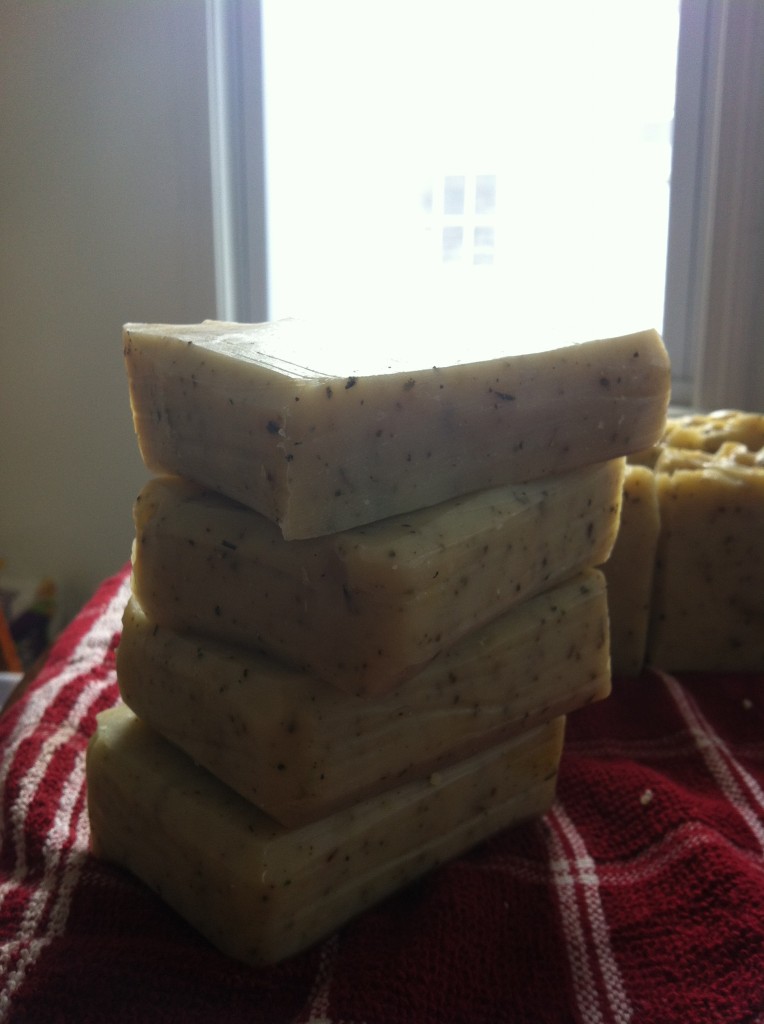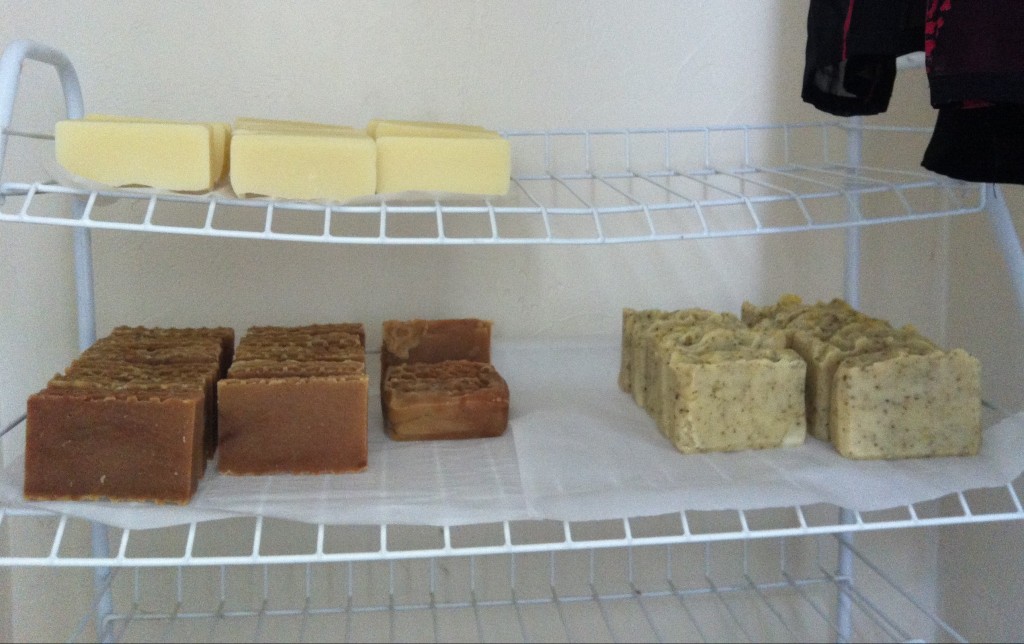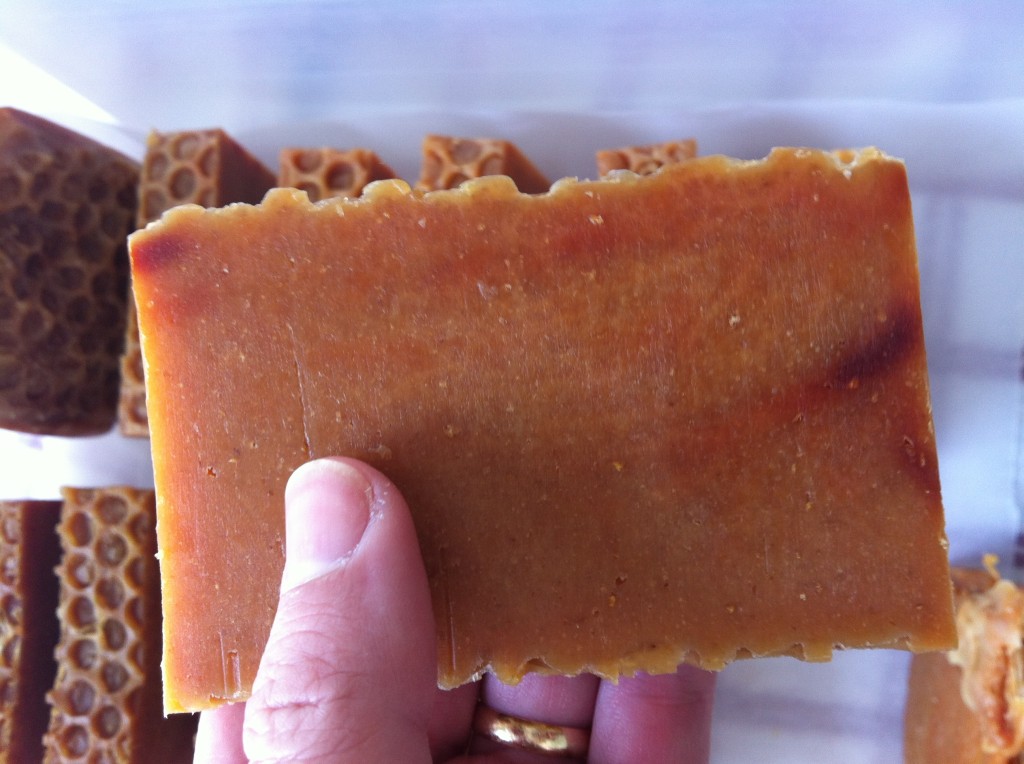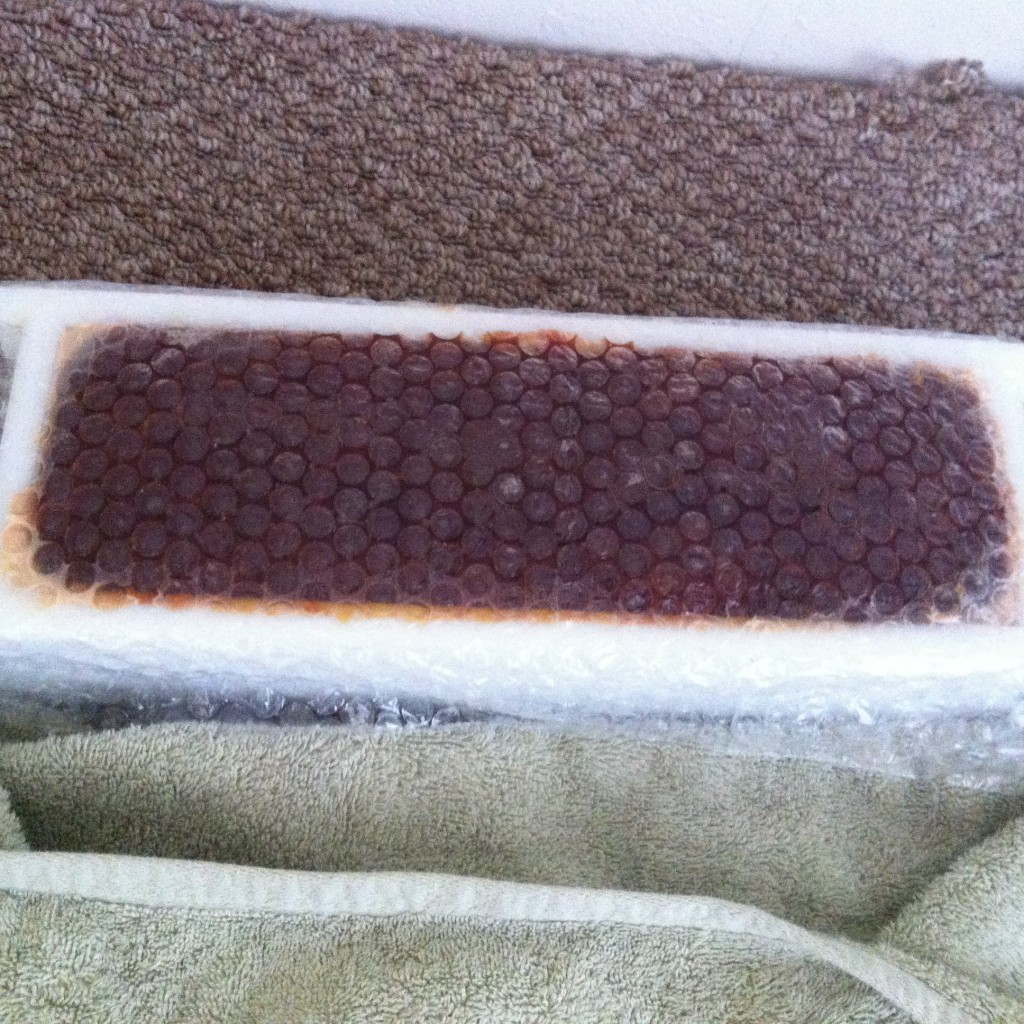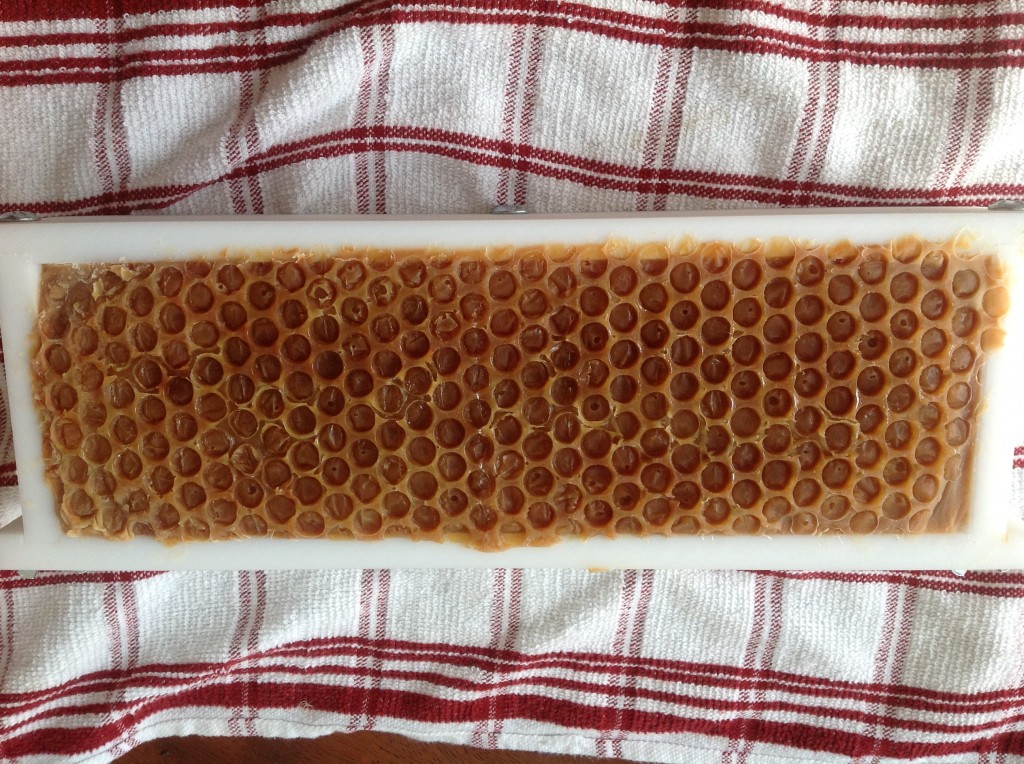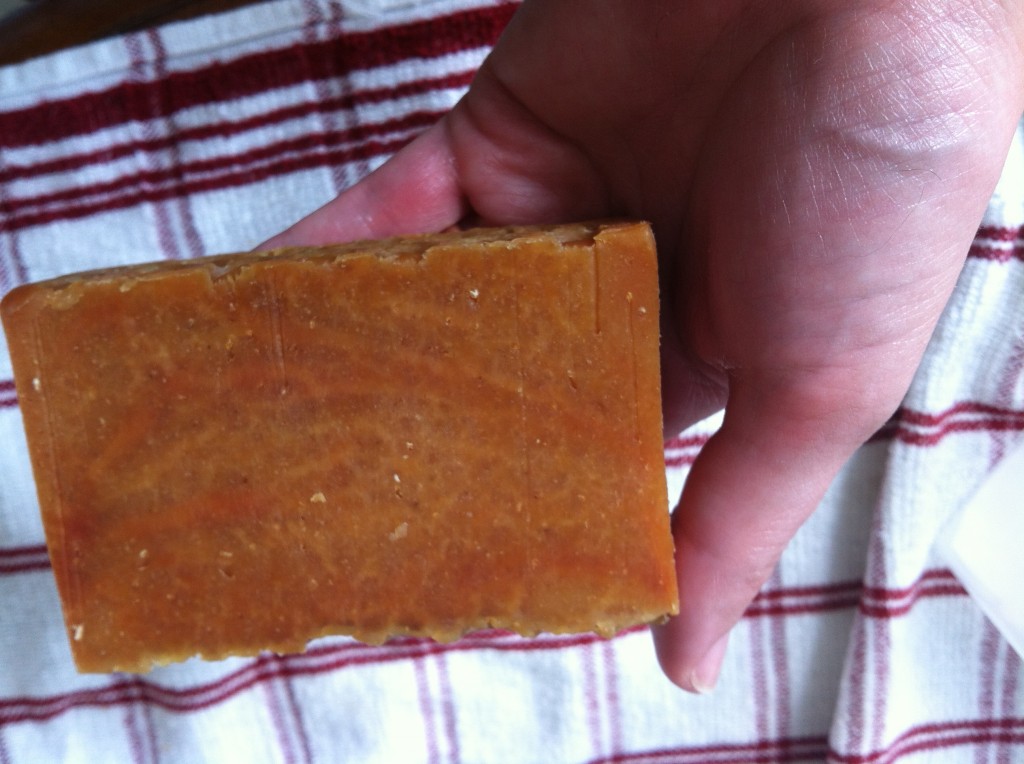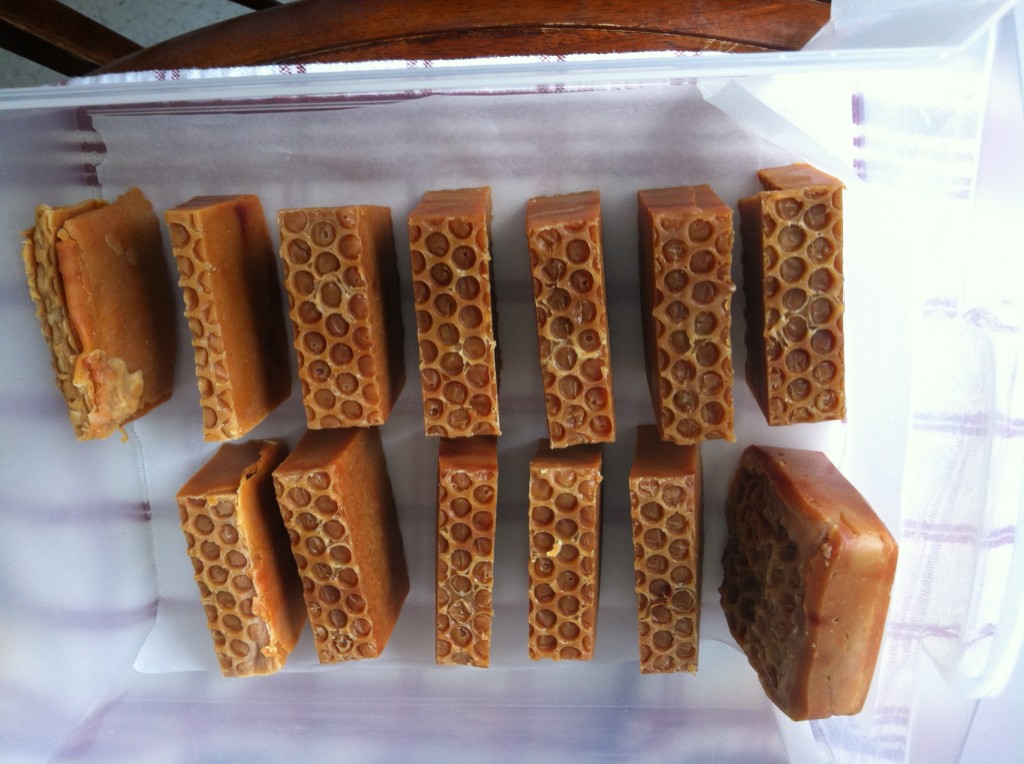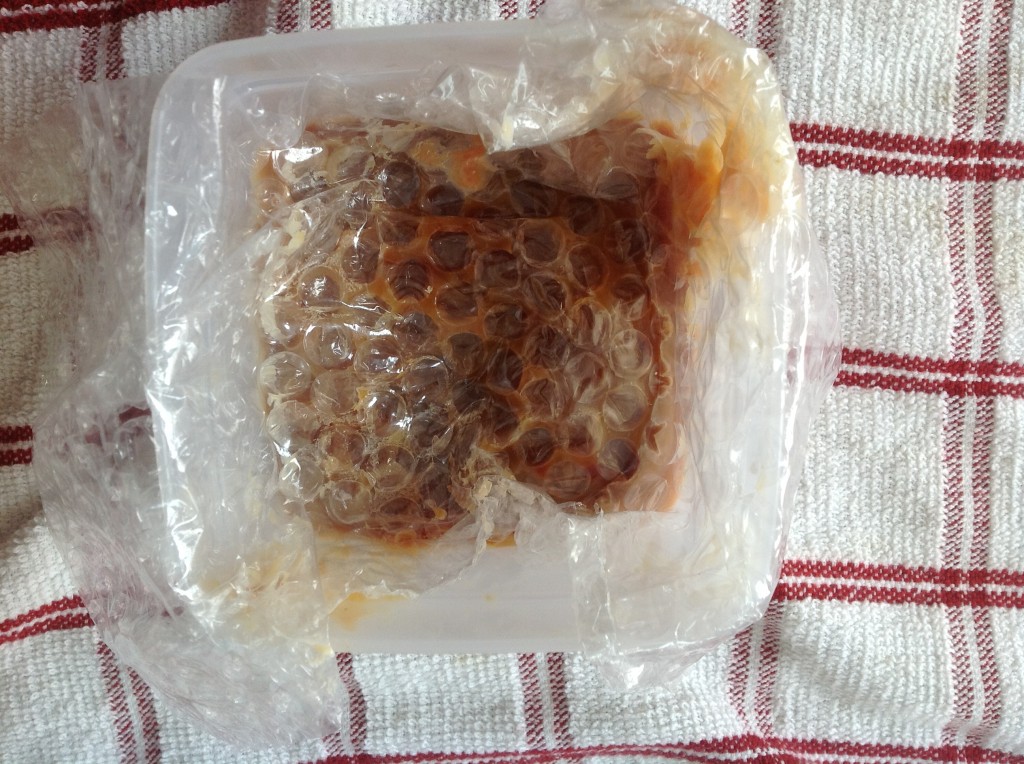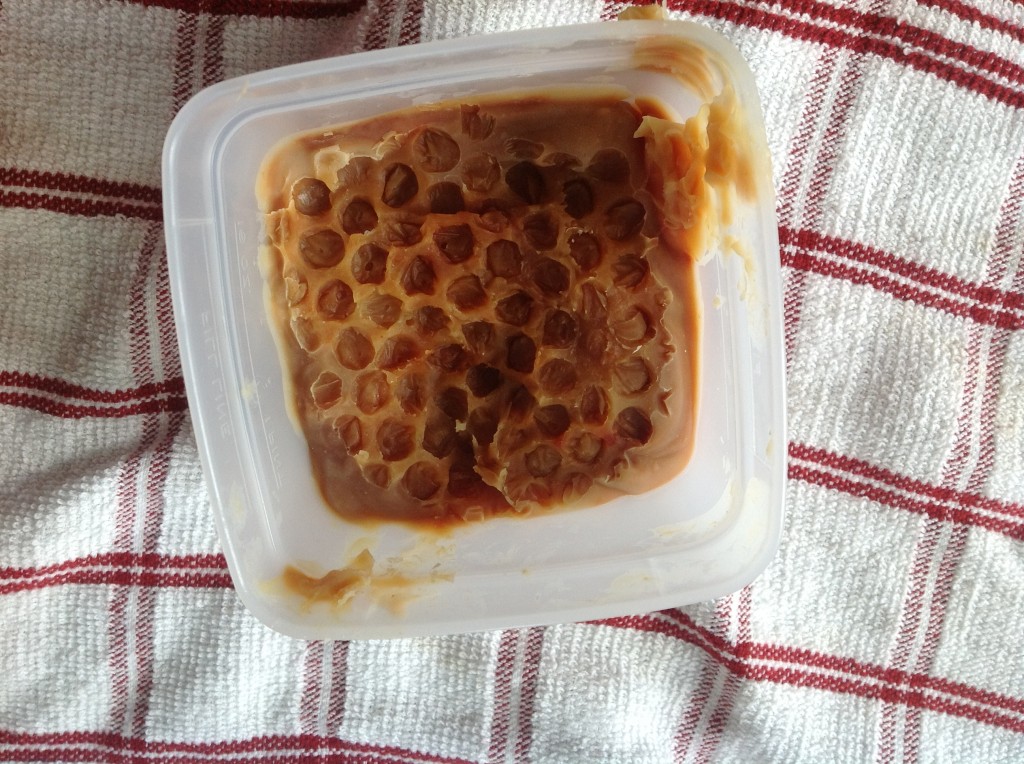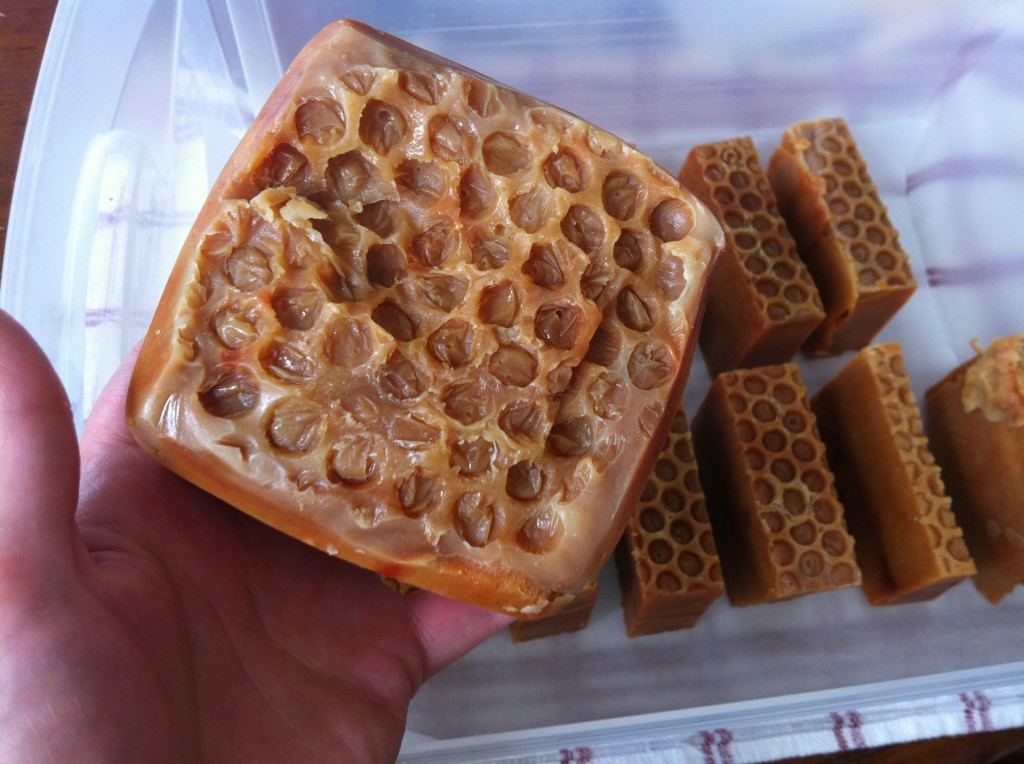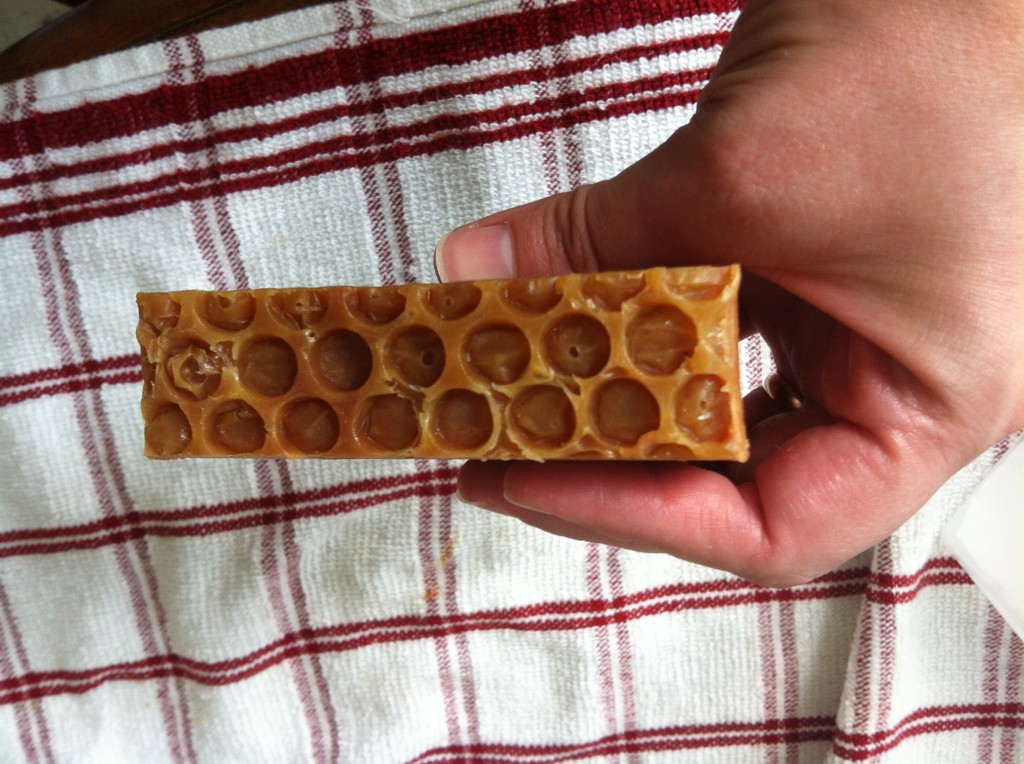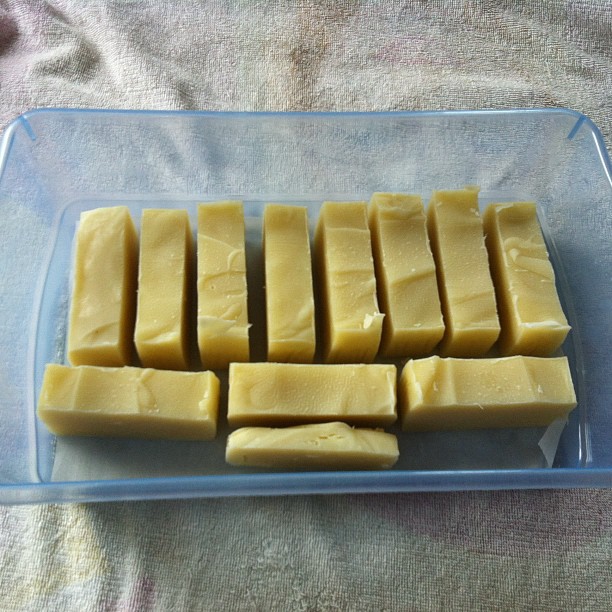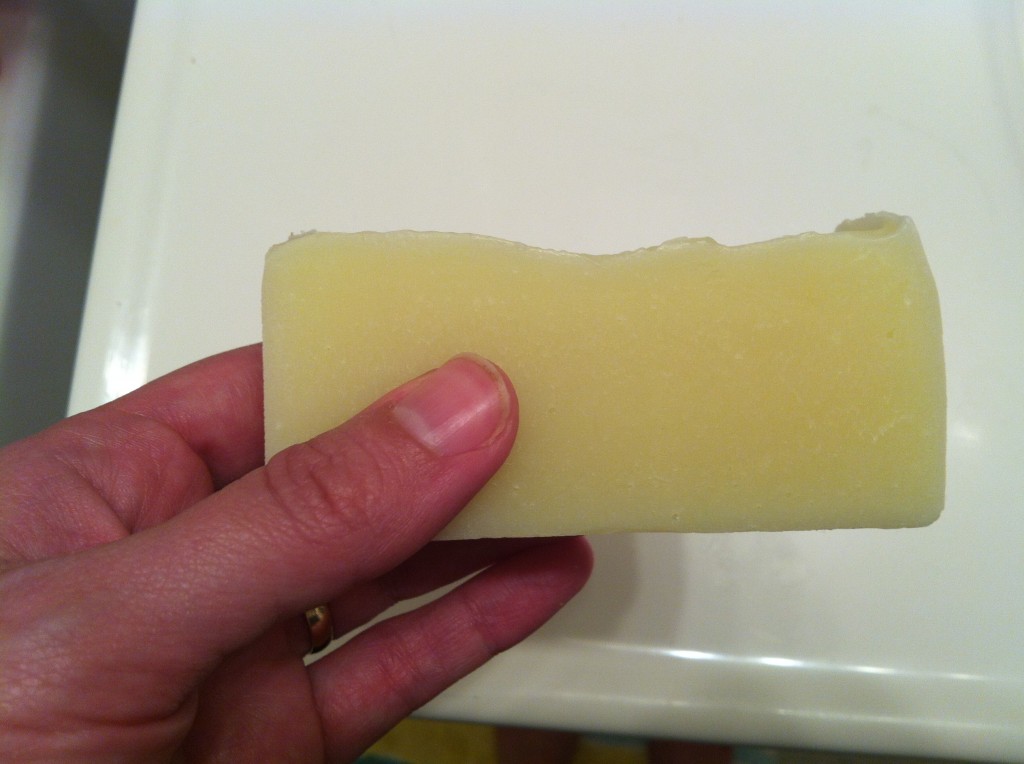The chai tea fragrance oil I ordered to make my chai tea soap this weekend didn’t arrive in time.
Boo!
But when life gives you lemons, you make lemonade, right? I could still make soap with things I had on hand or that I could easily pick up at the grocery store. I can’t find a place around here that sells essential oils or fragrance oils, so it had to be something that would be OK without added scent.
I decided that this weekend could be the weekend I experiment with using milk in soap, and I created a chocolate milk soap recipe I really wanted to try.
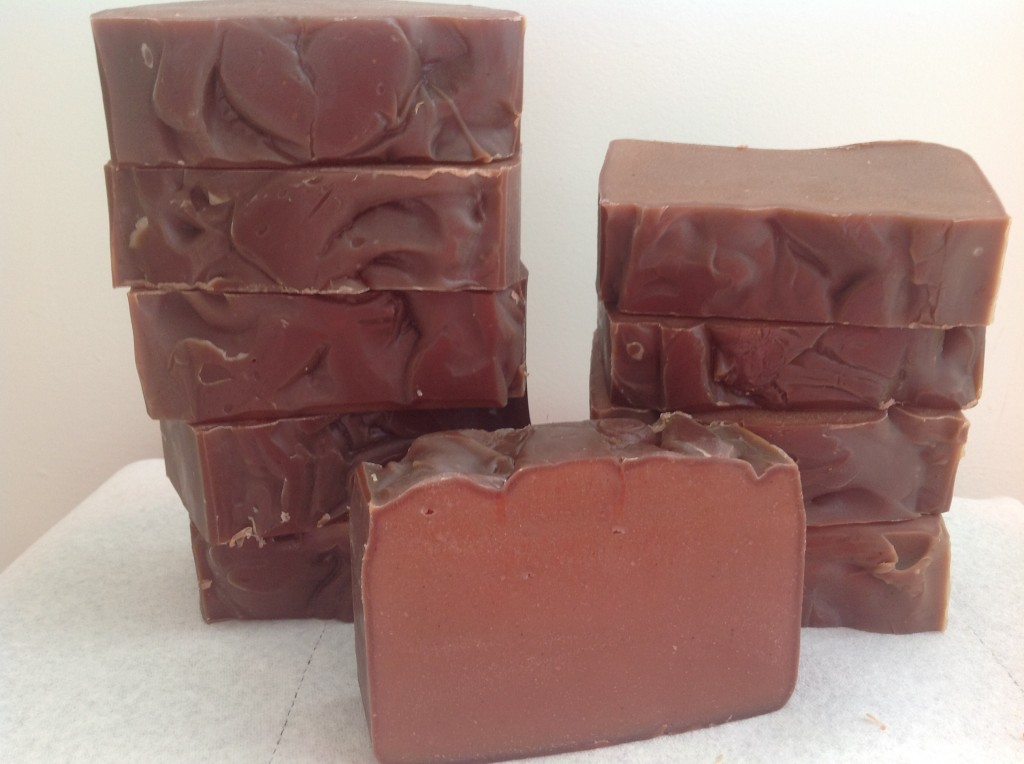 Working with both milk and chocolate can be more difficult, however, so I had to change some things about my process.
Working with both milk and chocolate can be more difficult, however, so I had to change some things about my process.
Ingredients
- 13.2 oz. olive oil
- 12 oz. coconut oil
- 6.8 oz. palm oil
- 4 oz. shea butter
- 0.625 oz. unsweetened baking chocolate
- 13.2 oz. whole milk
- 5.637 oz. lye
First, I measured out the whole milk, put it in a freezer bag, and froze it. This is a suggestion for working with milk (although she mentions it with goat milk) from Heidi Corley Barto’s in The Natural Soap Chef. When you use liquids other than water, it’s a good idea to follow suggestions of more experienced soapers like Heidi, and she’s not the only person I’ve seen mention working with frozen milk. The milk should be at least a frozen slush when you use it. Make an ice bath in your sink, and put the slushy milk into the ice bath. Then carefully, slowly add the lye, stirring as you go. Add a bit, stir a bit. Go very slowly. If the temperature of the lye mixture starts to climb above 140°, add more ice to the ice bath.
Prepare the chocolate with the oils. It should be melted. You can melt it in the microwave if you’re careful. Check this link for tips on melting chocolate. When the lye/milk has reached 100°, add it to the oil mixture. The rest of the process as the same as making any other cold process soap: use a stick blender to help the soap saponify, and once it reaches trace, pour it into the mold of your choice. My recipe fits a three-pound loaf mold.
I knew working with milk would be different, but as it turned out, the main difference seemed to be the amount of time for each step. I think I put too much ice in the ice water bath, and my lye heated up, but then cooled down to about 80° and stalled there, so I put it in a warm bath. Well, a hot one. And I managed to bring it up to 98°, but it wouldn’t budge any more, so I decided maybe I should add it to the oils. It look longer than usual to reach trace. The soap didn’t feel as warm as it normally does when I picked up the mold to put it in the closet where I keep my soap. It seemed to take longer to reach a gel stage, too. I’m not sure if this is just normal for working with milk, or if it was due to the fact that I had to warm up my lye, or what.
When I poured it into the mold, it did look exactly like chocolate milk. Really thick chocolate milk. Like chocolate pudding, actually. I fretted over it because it was slower going than the other soap I’ve made, but once it started to reach gel stage, I felt better.
But it darkened up quite a bit by the time it had cooled, as I figured it would.
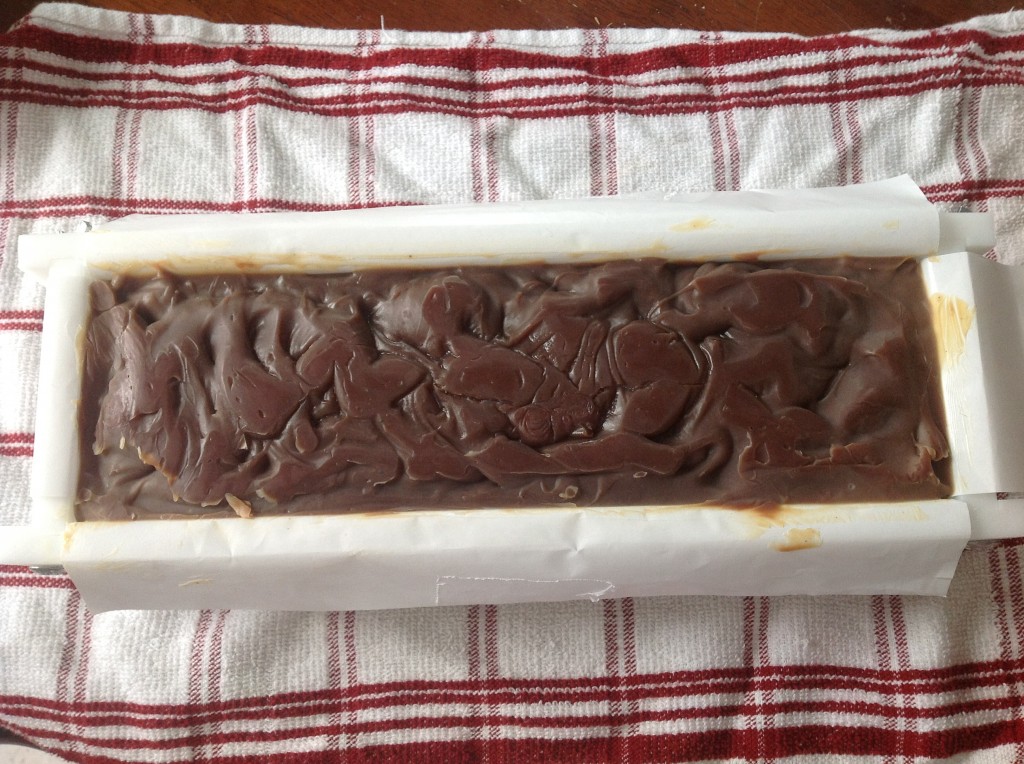
When I cut it into bars, I noticed that there was a sort of dark brown rim around the bar, while the middle was lighter. I think it was due to the fact that the soap isn’t completely hardened yet.
 A few hours later, the color had darkened to a deeper brown.
A few hours later, the color had darkened to a deeper brown.
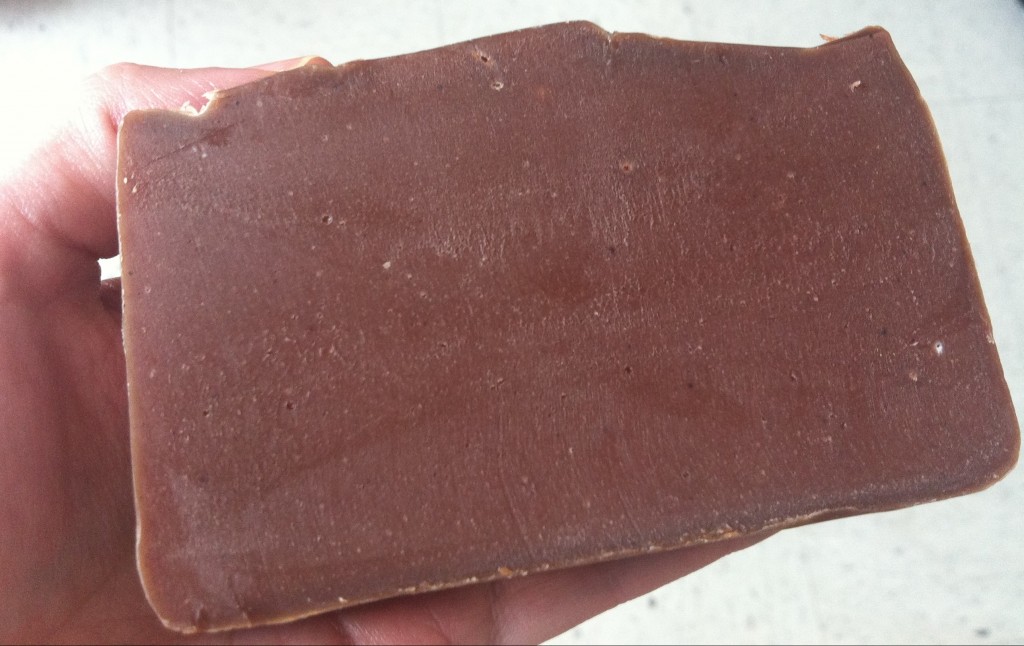 I noticed a couple of air bubbles, too, but you know, it’s chocolate milk, and who doesn’t blow bubbles in their chocolate milk, right?
I noticed a couple of air bubbles, too, but you know, it’s chocolate milk, and who doesn’t blow bubbles in their chocolate milk, right?
It has a light scent that reminds me more of chocolate cake than milk, but my husband thought it smelled like chocolate milk. I lathered up and washed my hands with a tiny ball of the soap I had made from some trimmings, and it has a nice creamy lather. I was worried the chocolate would discolor the lather, but it didn’t seem to. I will have to test it again after some time passes just to make sure.
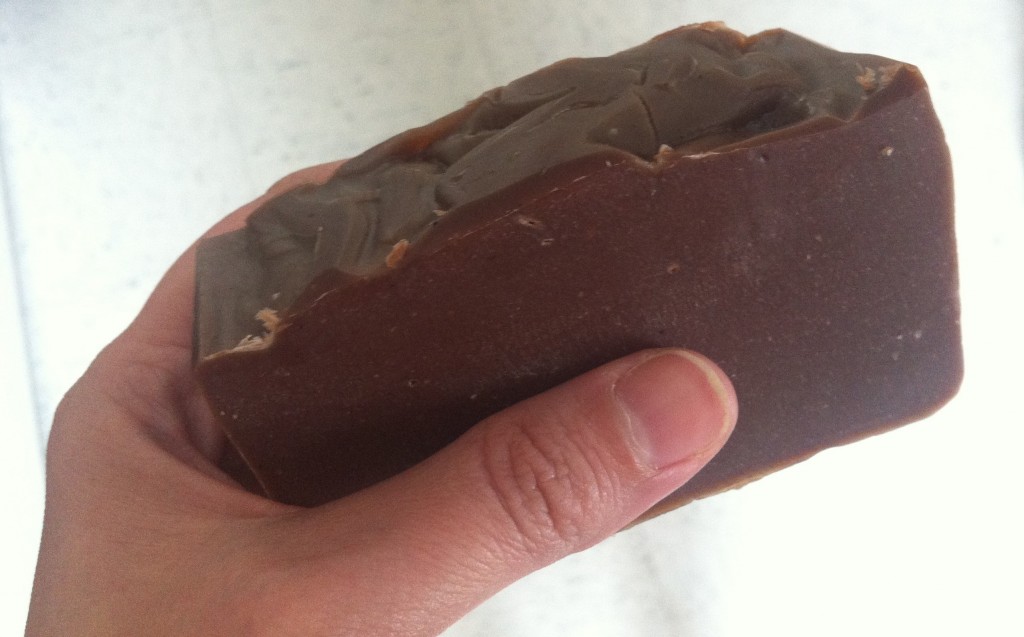
Chocolate Milk Soap by Dana Huff is licensed under a Creative Commons Attribution-NonCommercial 3.0 Unported License.
Permissions beyond the scope of this license may be available at Suds Life: About.

